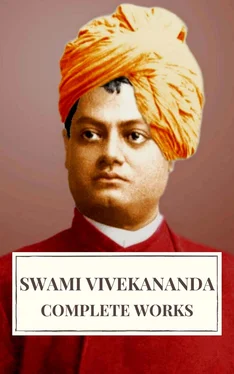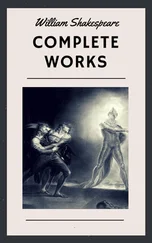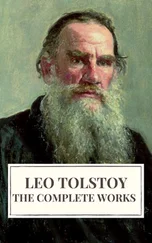Then all these various transformations of the qualities, which change from species to species, cease for ever.

32. The changes that exist in relation to moments and which are perceived at the other end (at the end of a series) are succession.
Patanjali here defines the word succession, the changes that exist in relation to moments. While I think, many moments pass, and with each moment there is a change of idea, but I only perceive these changes at the end of a series. This is called succession, but for the mind that has realised omnipresence there is no succession. Everything has become present for it; to it the present alone exists, the past and future are lost. Time stands controlled, all knowledge is there in one second. Everything is known like a flash.

33. The resolution in the inverse order of the qualities, bereft of any motive of action for the Purusha, is Kaivalya, or it is the establishment of the power of knowledge in its own nature.
Nature’s task is done, this unselfish task which our sweet nurse, nature, had imposed upon herself. She gently took the self-forgetting soul by the hand, as it were, and showed him all the experiences in the universe, all manifestations, bringing him higher and higher through various bodies, till his lost glory came back, and he remembered his own nature. Then the kind mother went back the same way she came, for others who also have lost their way in the trackless desert of life. And thus is she working, without beginning and without end. And thus through pleasure and pain, through good and evil, the infinite river of souls is flowing into the ocean of perfection, of self-realisation.
Glory unto those who have realised their own nature. May their blessings be on us all!
References To Yoga
Shvetâshvatara Upanishad
Chapter II

6. Where the fire is rubbed, where the air is controlled, where the Soma flows over, there a (perfect) mind is created.

8. Placing the body in a straight posture, with the chest, the throat and the head held erect, making the organs enter the mind, the sage crosses all the fearful currents by means of the raft of Brahman.

9. The man of well-regulated endeavours controls the Prâna; and when it has become quieted, breathes out through the nostrils. The persevering sage holds his mind as a charioteer holds the restive horses.

10. In (lonely) places as mountain caves where the floor is even, free of pebbles, fire, or sand, where there are no disturbing noises from men or waterfalls, in auspicious places helpful to the mind and pleasing to the eyes. Yoga is to be practised (mind is to be joined).

11. Like snowfall, smoke, sun, wind, fire, firefly, lightning, crystal, moon, these forms, coming before, gradually manifest the Brahman in Yoga.

12. When the perceptions of Yoga, arising from earth, water, light, fire, ether, have taken place, then Yoga has begun. Unto him does not come disease, nor old age, nor death, who has got a body made up of the fire of Yoga.

13. The first signs of entering Yoga are lightness, health, non-covetousness, clearness of complexion, a beautiful voice, an agreeable odour in the body, and scantiness of excretions.

14. As gold or silver, first covered with earth, and then cleaned, shines full of light, so the embodied man seeing the truth of the Atman as one, attains the goal and becomes sorrowless.
Yâjnavalkya quoted by Shankara
(In Svetâshvatara Upanishad Bhâshya.)

“After practicing the postures as desired, according to rules, then, O Gârgi, the man who has conquered the posture will practice Prânâyâma.
“Seated in an easy posture, on a (deer or tiger) skin, placed on Kusha grass, worshipping Ganapati with fruits and sweetmeats, placing the right palm on the left, holding the throat and head in the same line, the lips closed and firm, facing the east or the north, the eyes fixed on the tip of the nose, avoiding too much food or fasting, the Nâdis should be purified, without which the practice will be fruitless. Thinking of the (seed-word) “Hum,” at the junction of Pingalâ and Idâ (the right and the left nostrils), the Ida should be filled with external air in twelve Mâtrâs (seconds); then the Yogi meditates on fire in the same place with the word “Rung,” and while meditating thus, slowly ejects the air through the Pingala (right nostril). Again filling in through the Pingala the air should be slowly ejected through the Ida, in the same way. This should be practiced for three or four years, or three or four months, according to the directions of a Guru, in secret (alone in a room), in the early morning, at midday, in the evening, and at midnight (until) the nerves become purified. Lightness of body, clear complexion, good appetite, hearing of the Nâda, are the signs of the purification of nerves. Then should be practiced Pranayama composed of Rechaka (exhalation), Kumbhaka (retention), and Puraka (inhalation). Joining the Prâna with the Apâna is Pranayama.
“In sixteen Matras filling the body from the head to the feet, in thirty-two Matras the Prana is to be thrown out, and with sixty-four the Kurnbhaka should be made.
“There is another Pranayama in which the Kumbhaka should first be made with sixty-four Matras, then the Prana should be thrown out with sixteen, and the body next filled with sixteen Matras.
“By Pranayama impurities of the body are thrown out; by Dhâranâ the impurities of the mind; by Pratyâhâra impurities of attachment; and by Samadhi is taken off everything that hides the lordship of the Soul.”
Sânkhya
Book III

29. By the achievement of meditation, there come to the pure one (the Purusha) all powers of nature.
Читать дальше
























